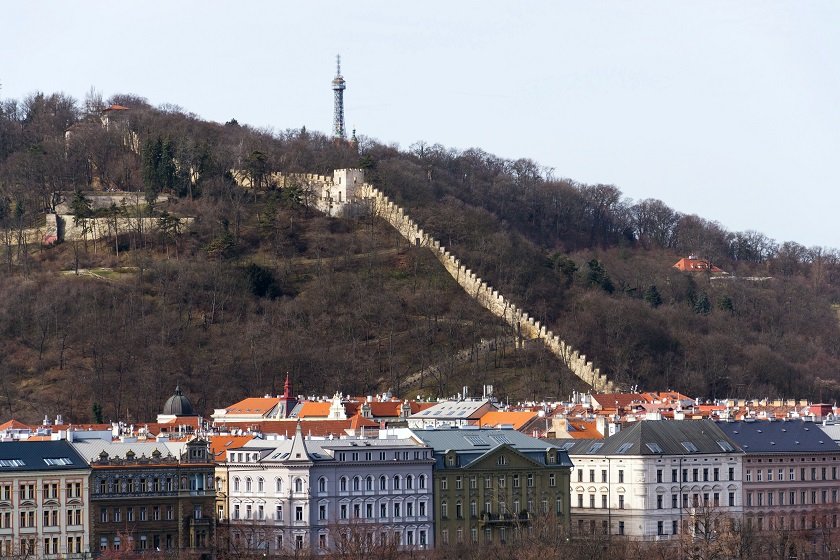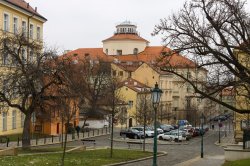Hunger Wall
The Hunger Wall is a defensive wall on Petřín Hill which stretches from Újezd to the Strahov Monastery (originally it stretched as far as Hradčany). It was built by order of Czech King and Emperor Charles IV between 1360 and 1362 in order to strengthen the fortifications of the Lesser Town and Prague Castle. According to legend, the real purpose of its construction was to employ the city’s poor that suffered from famine at the time. That’s why it was also called “Zubatá zeď” (Toothed Wall). Originally, the wall was more than four metres high and almost two metres wide. Spongilitic marlstone was used as the construction material, as it used to be mined on the slopes of Petřín Hill. Throughout the centuries, the Hunger Wall was rebuilt and interrupted by new gates several times. One of those who had the wall reinforced was, for example, Empress Maria Theresa.
Useful information for visitors
Public transport connections
Pohořelec tram stop
Malovanka bus stop, tram stop
Opening hours and admission
The Hunger Wall is open to the public free of charge.
Interesting facts about Hunger Wall
The Hunger Wall underwent several reconstructions over the centuries. The marlstone walls were first strengthened with eight towers that also served as observation posts. Later, battlements, a walkway and loopholes were added. The walls were permanently guarded by armed soldiers who stood guard in the bastions. These have not been preserved until today, but one of them was used for the foundations of the main dome of the Štefánik Observatory. In 1804, Martin Alois David, director of the Klementinum Observatory, carried out his observations at the Hunger Wall, when he was measuring the difference in geographical positions of Prague and Dresden.




